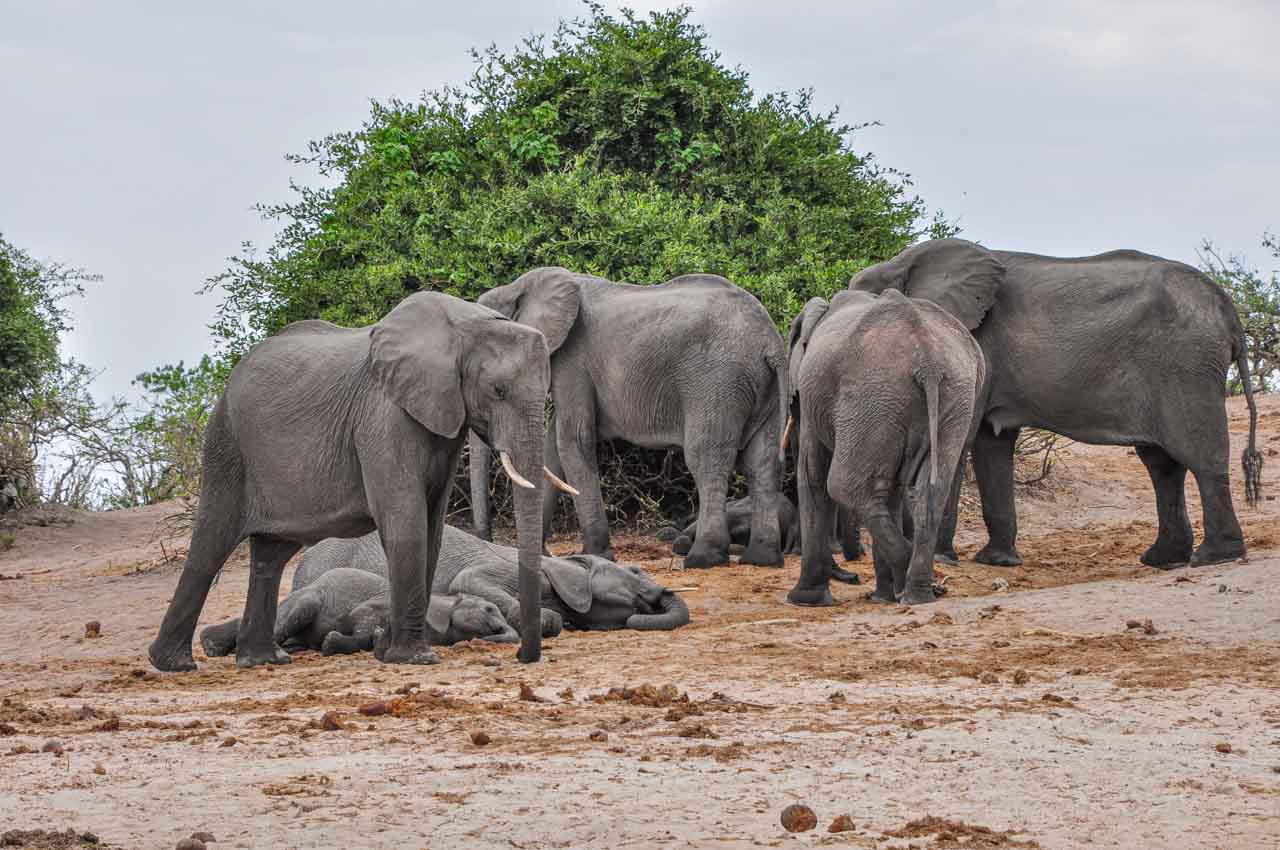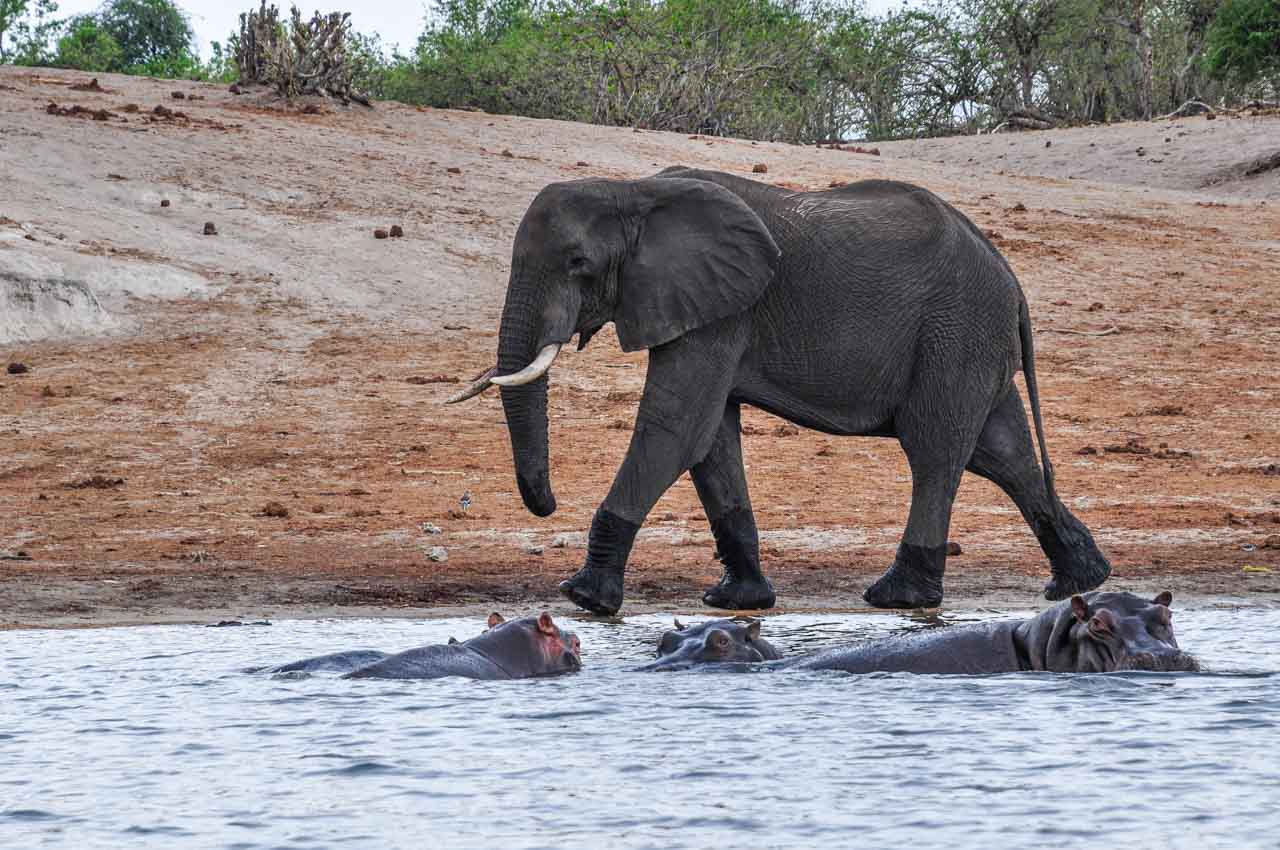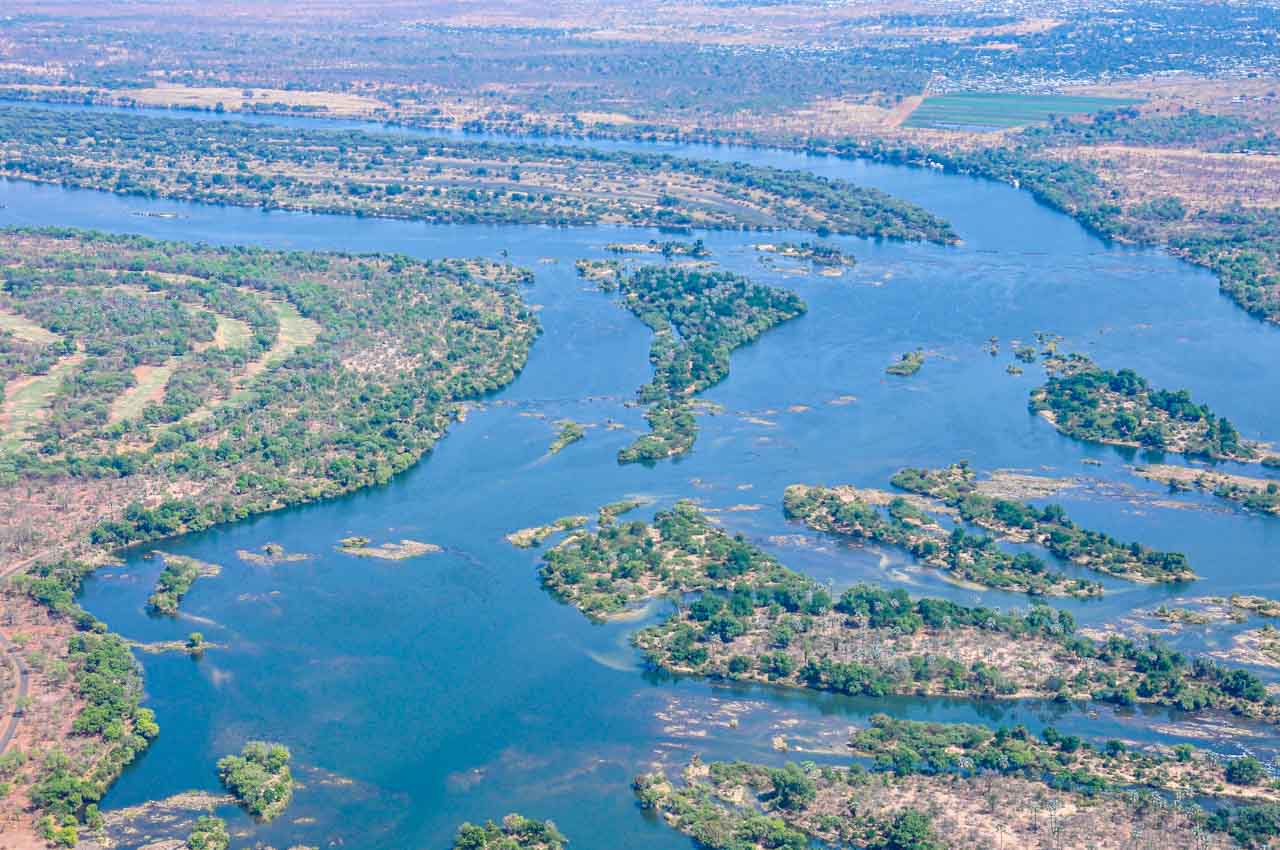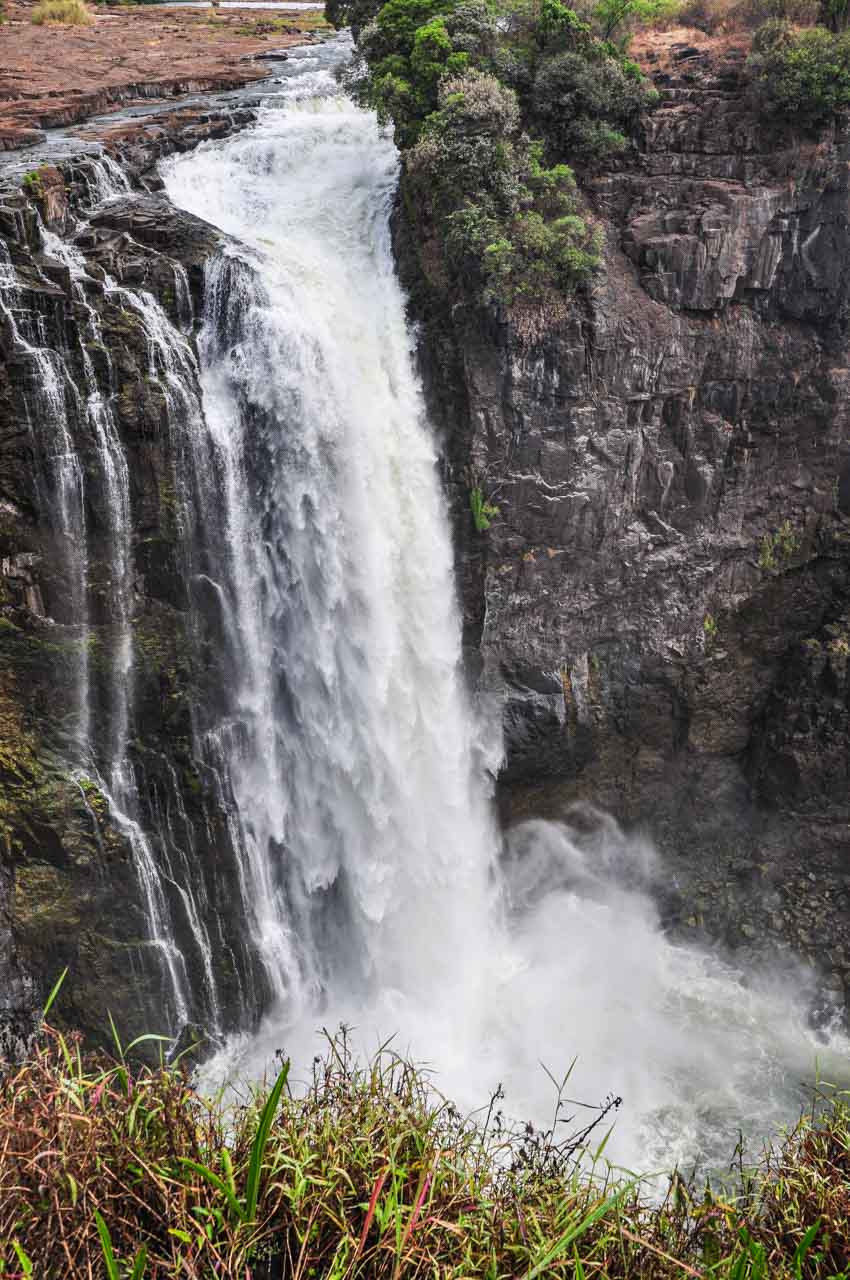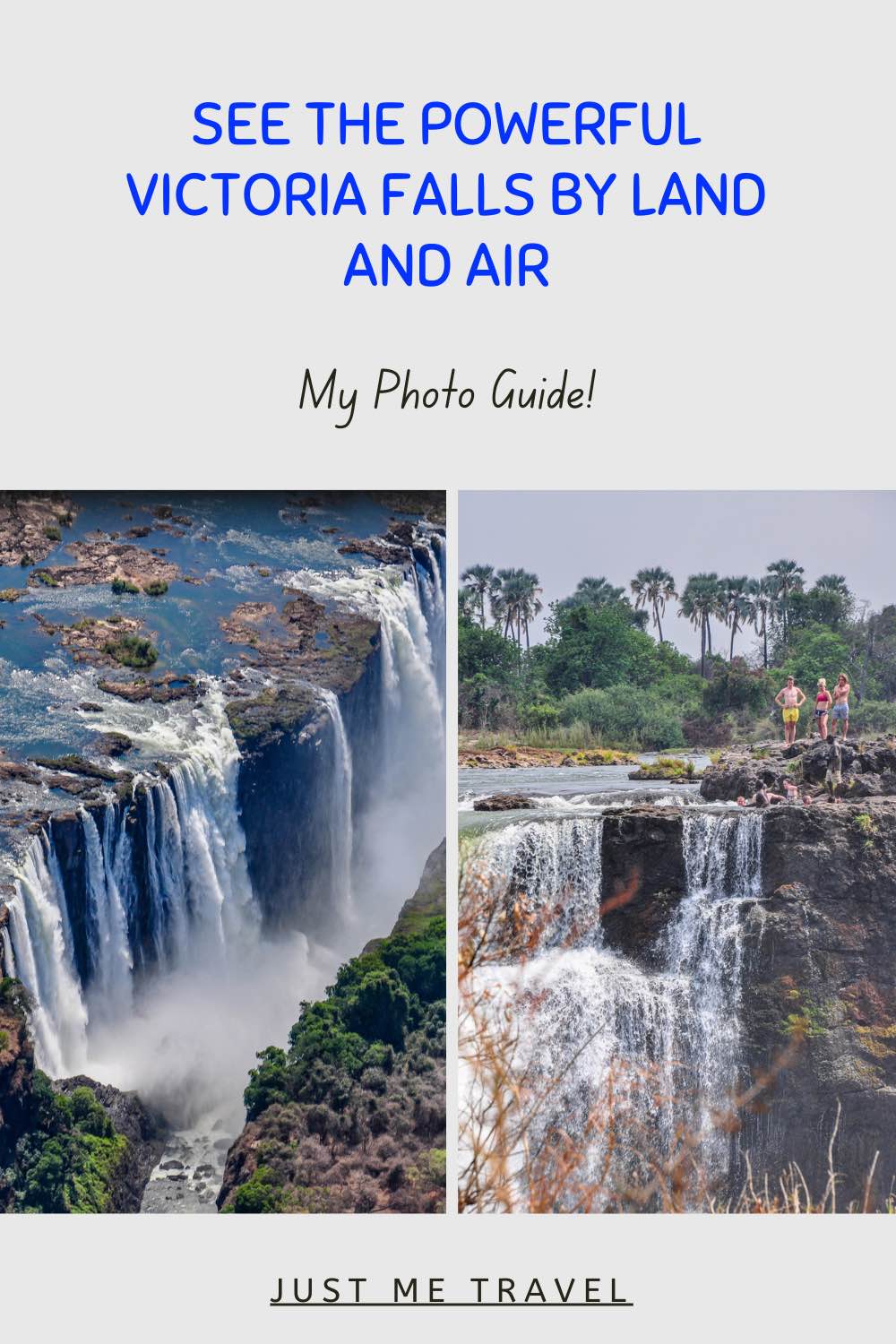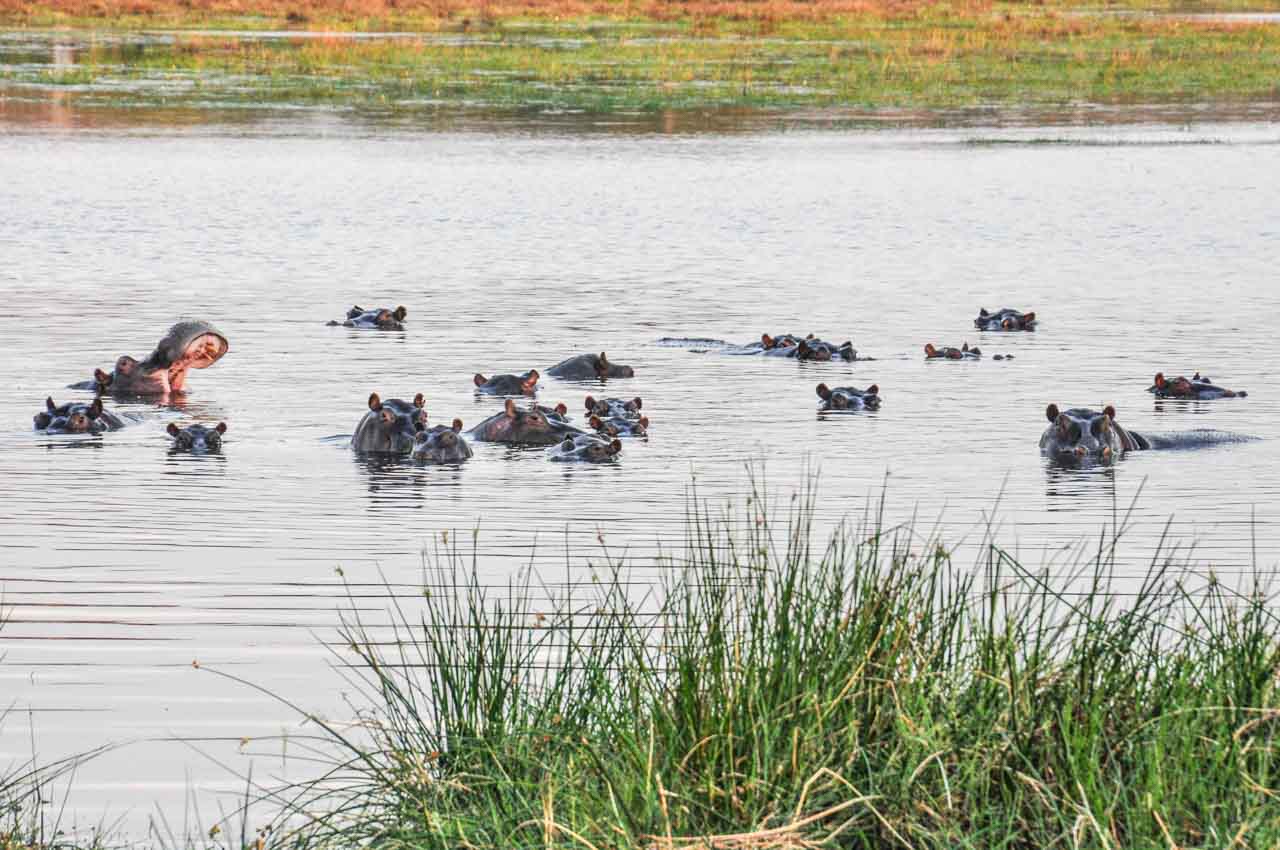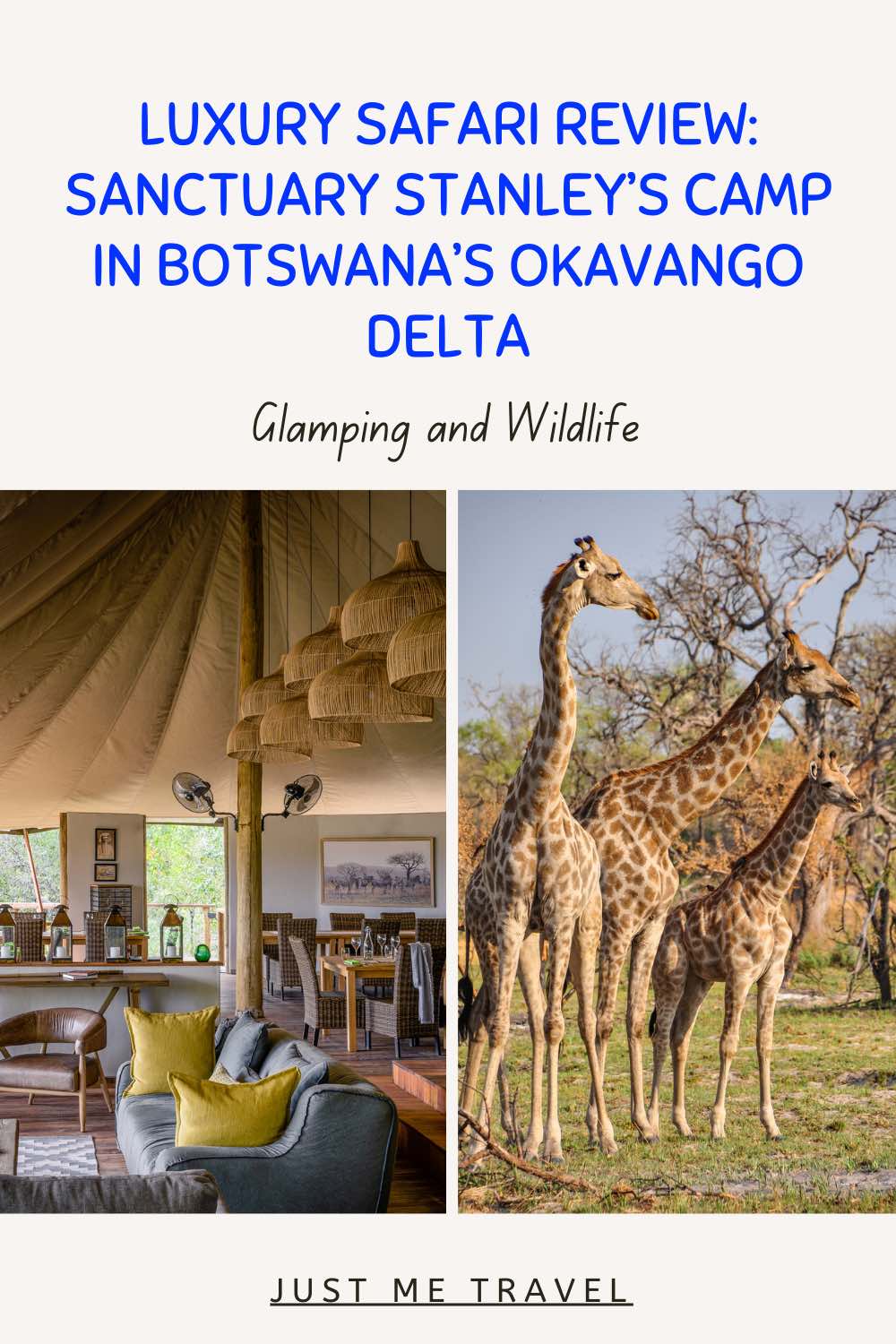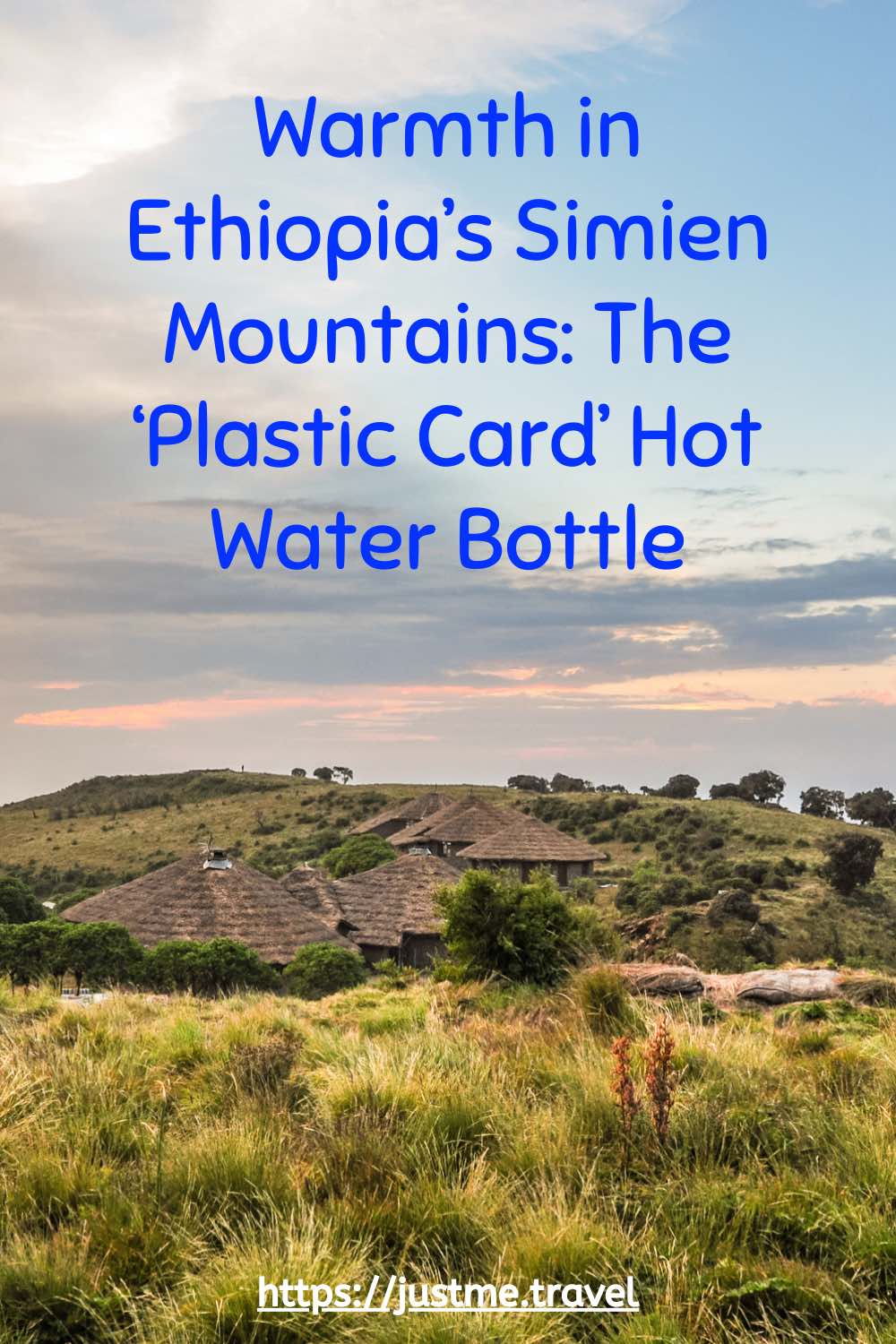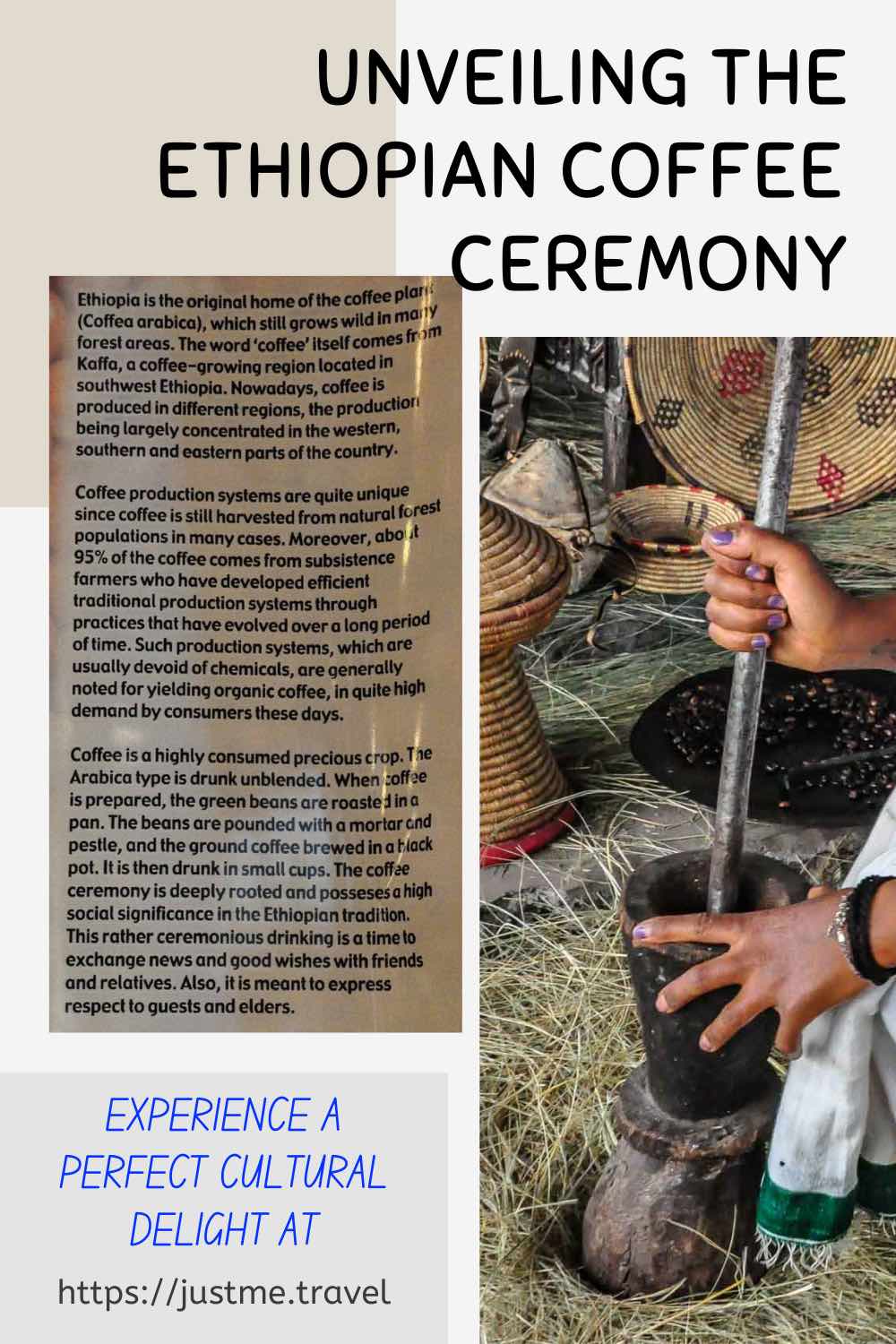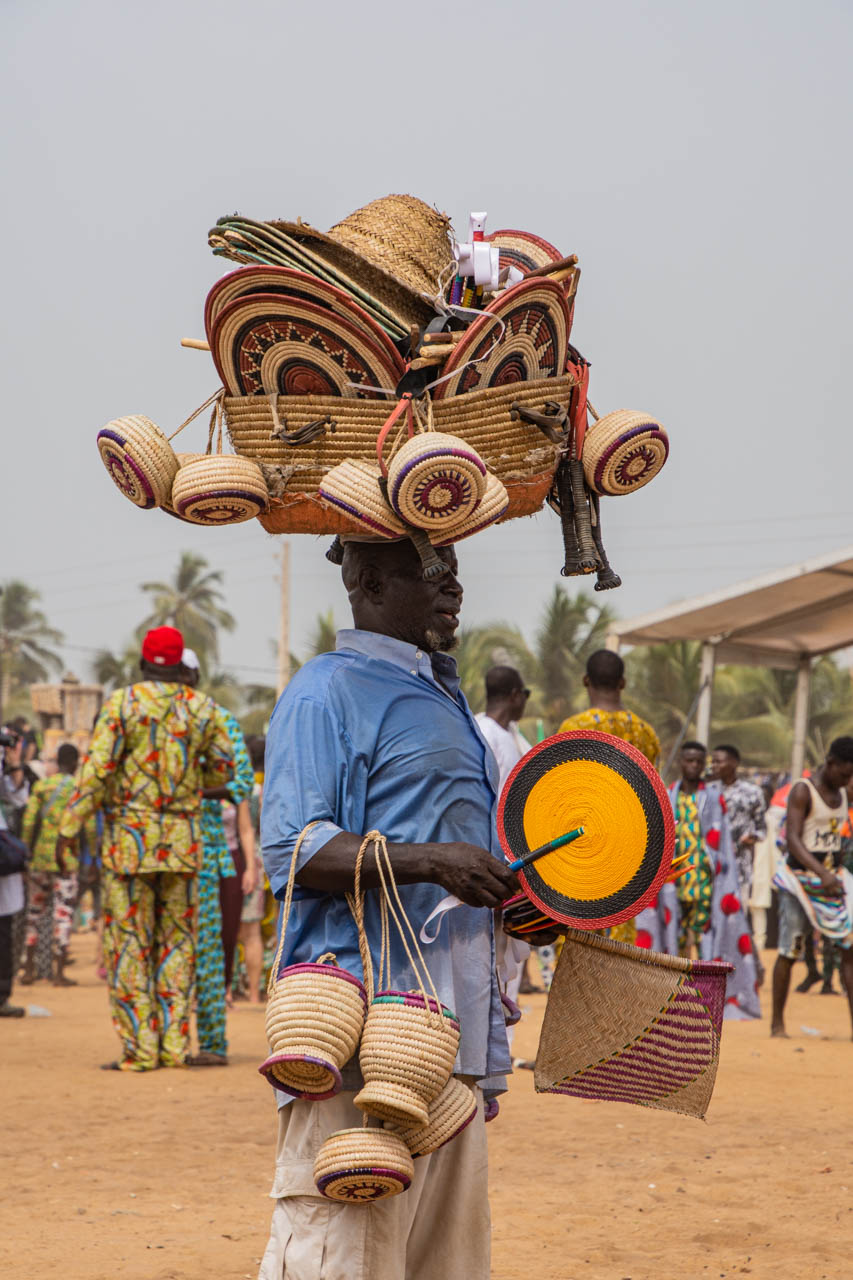Cruising Along the Chobe River Provides a Different Perspective on Wildlife Viewing Than a Traditional Land-Based Safari. Gliding along the tranquil waters of the Chobe River, where Namibia and…
Cruising Along the Chobe River Provides a Different Perspective on Wildlife Viewing Than a Traditional Land-Based Safari.
Gliding along the tranquil waters of the Chobe River, where Namibia and Botswana meet, I embarked on a safari experience unlike any other. Onboard the Chobe Princess houseboat, I had a front-row seat to one of Africa’s most spectacular wildlife displays – without even stepping onto land. The river offered a unique vantage point for the thriving activity on the riverbank. From magnificent elephants and watchful hippos to resting crocodiles and playful baboons, my two-night Chobe River Safari left me with unforgettable memories.
In this post, I share the highlights of my Chobe River safari, including how to reach the Chobe Princess, the best time to visit, and what makes this corner of Africa a must-see for wildlife enthusiasts. I hope this post inspires you to embark on your own Chobe River adventure.
About the Chobe River
The Chobe River begins in the mountains of Angola, flows through the neck of Namibia’s Caprivi Strip, forms the border between Namibia and Botswana, and then flows into the Zambezi River.
The Chobe River is the meeting point of four countries – Zimbabwe, Botswana, Namibia, and Zambia. Read on to learn why this created an interesting triple border crossing for me to reach my river cruise boat.
The Chobe River flows for 60 kilometres through Chobe National Park. It serves as a lifeline for a variety of animals, drawing them in for drinking, bathing, and resting. The riverfront is famous for seeing large herds of elephants and Cape Buffalo, pods of hippos, lions, crocodiles, and many bird species.
I cruised the Chobe River with the Zambezi Queen Collection on the Chobe Princess houseboat.
Getting there
Zambezi Queen Collection’s houseboats officially cruise on the Namibian side of the Chobe River. However, because they are quite remote, the easiest access to them is from Kasane in Botswana.
I travelled to the Chobe Princess from Victoria Falls in Zimbabwe. I arrived in and/or left three countries in the space of one and a half hours: I left Zimbabwe, arrived in Botswana, left Botswana, and arrived in Namibia! Each border crossing required queuing for immigration, filling out forms, and paying for visas. I did wonder if I would have enough pages in my passport to accommodate all the stamps.
After crossing the border from Zimbabwe into Botswana, I was driven into Kasane to cross the border from Botswana to Namibia. Upon exiting Botswanan immigration, a Chobe Princess crew member took me by speed boat to Namibia’s border control and immigration on Impalila Island. Alighting from the speed boat, I had to walk up a hill to get to the Namibian immigration office. Luckily, I could leave my bag with the crew member in the speed boat! At one point, with the immigration building in sight, there was a sign that read, “Take a deep breath, you’re almost there”. At the gate to the immigration building’s enclosure, there was another sign, “Congratulations, you’ve made it”. I later learned that a Chobe Princess manager was responsible for the signs – to make the slog up the hill more bearable!
Having completed all my border crossings, we sped down the Chobe River for about half an hour to meet up with the Chobe Princess, which didn’t stop for me to board. But it was cruising very slowly, so I was able to transfer from the speed boat to the houseboat without mishap.
About the Chobe Princess houseboat
The Zambezi Queen Collection has a fleet of houseboats cruising the Chobe River – the luxury Zambezi Queen and three Chobe Princesses.
I cruised the Chobe River on the larger (five-cabin) Chobe Princess. My two-night package included all meals, soft drinks and water, local beers and wines, teas and coffee, and morning and afternoon river safaris (water-based game viewing).
I only took a two-night cruise instead of three nights because I had made a last-minute booking. I would have preferred a three-night cruise as I was sad to say goodbye to the Chobe River and my unique wildlife experience.
The houseboat looked tired and could have used some updating. (I understand the Chobe Princess houseboats have recently been upgraded.) My standard cabin was big enough for a king-sized bed, but that was all, and I couldn’t turn around in the bathroom. The electricity struggled and kept cutting out, which meant the cabin never really cooled down, and batteries took forever to charge. The meals were hit and miss, ranging from okay to delicious. However, none of this detracted from my wonderful cruising and game-viewing experiences, and the service was excellent.
The Chobe Princess offered an informal, relaxed, and intimate river cruise with a unique game-viewing experience. It traversed the Chobe River along the banks of Botswana’s Chobe National Park. How far you travel on the river will depend on water levels, as houseboats can get stuck if the river is too low. However, you travel further up and down the river on the Chobe Princess’ safari boat – a small open aluminium boat with an outboard motor (known as a tinnie in Australia).
My African river safari
While the Chobe Princess operates from the Namibian side of the Chobe River, I am sure we were more often in Botswana than Namibia when motoring up and down the river in the safari boat when viewing wildlife from the water!
Game viewing from the river offers a truly unique wildlife safari perspective.
What I learned and saw:
- Elephants can’t swim. When they cross the river, they are walking on the riverbed. A baby elephant will hang onto their mother’s tail, and auntie comes behind, lifting the baby every so often for its trunk to go out of the water so it can breathe. It’s funny watching these little trunks and nothing else appear above the water. Something you won’t see on a land safari!
- I saw a baby elephant drinking from the river with its mouth instead of its trunk. I learned that baby elephants cannot use their trunks until three months old.
- I watched a baby elephant flapping its trunk around because it didn’t know what it was for or how to use it.
- I saw elephants lying down with other elephants standing in a circle around them, guarding them. When I saw this for the first time, I asked my river safari guide if the elephant was lying down because it was giving birth or was sick and dying. I was assured the elephant was just resting. I later saw several elephants being guarded while lying down, so I had to believe my guide when he said they were just resting and not sick.
- I laughed as I watched a baby elephant make five attempts to get up a tricky part of the riverbank before succeeding.
- I watched two juvenile male elephants playing at aggression.
- Cape Buffalos look like a storybook Heidi, with a big bone across their foreheads and turned-up horns like pigtails.
- The hippopotamus is the most dangerous land animal in Africa, killing about 500 people per year. They are massive, fiercely territorial, aggressive, agile in and out of the water, have long sharp teeth in a huge jaw, and can run up to 30 kilometres an hour on land. So, you can understand why hippos are such a fearsome animal to encounter!
- Hippos don’t poop on land. They poop in the water and use their tails to fling it as far as up to ten metres away.
- Crocodiles were resting on the riverbank, and one was sitting on her eggs.
- A social group of baboons down by the river were feeding their young, eating, preening, and playing.
- Waterbucks are easily distinguishable because of the ‘target’ (white ring) on their rump.
- Giraffes must spread their front legs to drink or eat grass. This makes them highly vulnerable to predatory animals because they can’t get up quickly.
Why I recommend a Chobe River Safari on the Chobe Princess
A cruise on the Chobe River offers a unique wildlife safari experience that differs from traditional land safaris. Here are some compelling reasons why I recommend a multi-day Chobe River cruise:
- Intimate and comfortable accommodation: The Chobe Princess is a small houseboat that accommodates a maximum of ten passengers. While my cabin was sufficient, the service was personalised, the sundeck was furnished with comfortable lounges, and the cruising was relaxed.
- Abundant wildlife: The Chobe River is known for its dense wildlife population, especially during the dry season when animals amass along the riverbanks. You can spot elephants, hippos, crocodiles, buffalo, and various bird species. Since the river provides a natural water source, it’s a prime location to observe animals in their natural habitat, often at close range.
- Convenient and comfortable game viewing: A river cruise offers a leisurely and comfortable way to see wildlife instead of driving around in a vehicle for hours. You can relax on the Chobe Princess’ sundeck with a drink while enjoying panoramic views as the boat drifts along the river.
- Unique water-based perspective: Seeing animals from the water as you cruise along the Chobe River provides a different perspective on wildlife than a traditional land-based safari.
- Exclusive and peaceful: Being on the water, you escape the crowds and busy roads often found in popular safari parks. As such, you experience a quieter and more intimate encounter with nature, especially on a smaller vessel like the Chobe Princess.
- It’s an adventure: Getting to the Chobe Princess (described earlier in this post) was an adventure I wouldn’t miss.
If you love wildlife and an unforgettable safari experience, a Chobe River cruise on the Chobe Princess is definitely worth considering.
A note on when to go
I cruised the Chobe River in early November when the dry season, described as “Lots of wildlife on the riverbanks”, had just ended. The dry season is a time when many animals gather around and stay close to the main water source, and you can watch them as you cruise by.
November is generally the start of the wet season. However, I experienced no rain and wildlife viewing along the riverbank was exceptional, especially for herds of elephants, pods of hippos, buffalo, crocodiles, and monkeys, which were drawn to the water.
My two-night wildlife safari cruise on the Chobe River was an unforgettable experience. The combination of the river’s natural beauty, the abundant wildlife, and the comfort of the Chobe River houseboat created a truly magical journey. If you seek a unique safari experience – one where the wildlife comes to you – this is it!
Whether you’re a seasoned traveller or a nature enthusiast, a safari cruise on the Chobe River promises an adventure like no other – one that I can’t recommend enough. The memories made during this trip will stay with me for a lifetime.
Disclaimer: This post contains no affiliate links. All views and opinions are my own and non-sponsored. All photos are my own and remain the copyright of Joanna Rath/Just Me Travel.
© Just Me Travel 2018-2024.
Where was your favourite river cruise?
I love hearing from you and look forward to reading and responding to your comments. Please join the conversation by leaving a comment below.
Like this post? Save it for Later!
Author’s Note: Please check the latest travel restrictions before planning any trip and follow government advice.
You might also like
 SEE THE POWERFUL VICTORIA FALLS BY LAND AND AIR – My Photo Guide (2024 Updated). My landscape and aerial photos will inspire you to visit Victoria Falls, on the border of Zimbabwe and Zambia. It’s a bucket-list destination!
SEE THE POWERFUL VICTORIA FALLS BY LAND AND AIR – My Photo Guide (2024 Updated). My landscape and aerial photos will inspire you to visit Victoria Falls, on the border of Zimbabwe and Zambia. It’s a bucket-list destination!
 A WILDLIFE SAFARI ADVENTURE AT SANCTUARY STANLEY’S CAMP, OKAVANGO DELTA. Read my honest review on a safari camp in Botswana where luxury glamping meets unforgettable wildlife encounters.
A WILDLIFE SAFARI ADVENTURE AT SANCTUARY STANLEY’S CAMP, OKAVANGO DELTA. Read my honest review on a safari camp in Botswana where luxury glamping meets unforgettable wildlife encounters.




